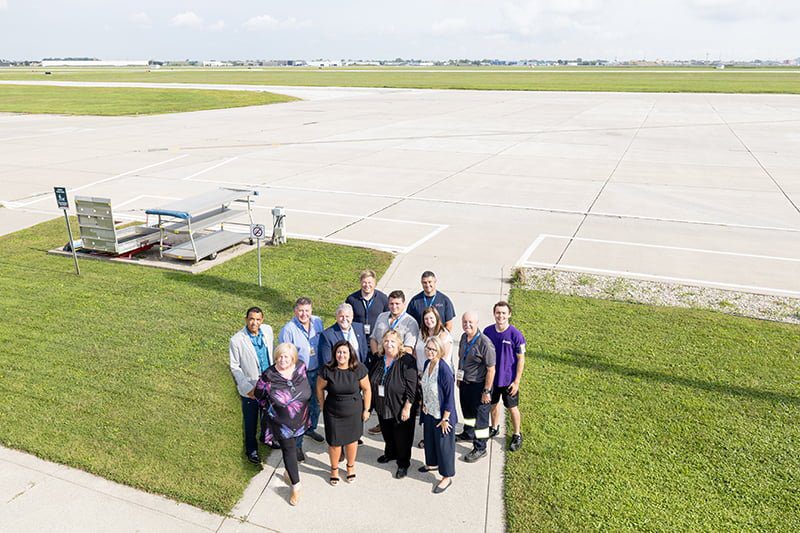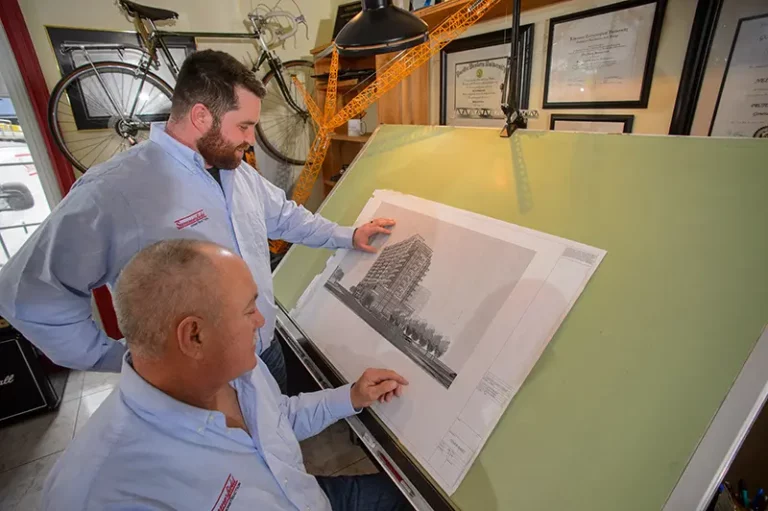The year 1928 was a momentous time in the City of Windsor. Construction of the Ambassador Bridge and Detroit-Windsor tunnel were simultaneously undertaken that year. On September 8, 1928, the Windsor Airport—known as the Walker Airport until 1967, after Windsor’s venerable Hiram Walker—began its life.
Like the city it serves, the Windsor Airport has a tumultuous history.
The original Walker Airport consisted of approximately 400 acres. Today, it consists of 2,200 acres of land, including nearly 285 acres of solar farm. It has 130 acres of paved surface, including a 9,000 ft. x 200 ft. runway—the third longest runway in Ontario, surpassed only by airports in Toronto and North Bay.
Ninety-five years ago, 20,000 people showed up to Walker Airport for its grand opening.
Under the headline “Great Throng Attends Official Ceremonies Saturday”, the September 10, 1928, edition of the Border Cities Star reported, in part: “… Despite the early afternoon heat and the untimely breaking down of the battery of the loudspeakers… the audience listened to the addresses, although they were broken at times by the roar of the racing airplane engines, from the field.”
Women took to flying early in the history of Windsor Airport. A photo from the 1930s shows two women—Mrs. Jesse Chapman of Los Angeles and Mrs. John Canfield of Windsor—who had competed with a dozen men in one of the earlier air races at Walker Airport.
The airport’s growth and milestones were well-recorded in local media. According to a brief overview in The Windsor Daily Star “[t]hree things made 1940 the year in which Windsor airport really started to buzz… First, the Department of Transport took over the field… Second, No. 7 Elementary Flying Training School… was established… Third, Trans-Canada Air Lines started airmail, express and passenger service in and out of Windsor.”
The second of these three developments was the most significant: No. 7 Elementary Flying Training School, “headed by a civilian committee and staffed by R.C.A.F. pilots started dozens of fliers on their way to the important air battles which helped eventually win” World War II.
Part of growth meant increasing security. Following the September 11, 2001, attacks on the United States, security at the airport was substantially increased. That wasn’t the only year active measures were taken to tighten things up at the airport. In 1967, a controversy arose with kids flying kites too close to the airport. An article in the newspaper stated: “Windsor police are making regular patrols in the area of the Windsor Airport to control kite-flying within a 100-foot ceiling.
“This action was taken after reports of kites threatening the approach to the airport… One commercial airline pilot logged a kite at 800 feet altitude… Police have warned children who are on Easter holidays to keep kites down to the 100-foot limit.”
After police wrangled the renegade kite-flyers, the airport continued to focus on its central mandate: “Connecting people safely where they want to go,” as current President and CEO, Mark Galvin states.
Throughout its life, Windsor Airport has been an important hub in the transportation network.
Beyond the myriad professional athletes who have passed through Windsor Airport over the years, famous faces have made appearances there, too.
In 1980, actor Gregory Peck and legendary crooner, Frank Sinatra, landed at the airport on their way to an event at the Imperial Quality Assurance Centre, hosted by Chrysler Chairman, Lee Iacocca.
Famous actors, singers, and athletes are not the only celebrities to appear at Windsor Airport. In 1987, more than 10,000 people converged on the airport to watch a fly-over by the British Airways Concorde—the fastest commercial plane in the air, capable of maintaining a supercruise up to Mach 2.04 (2,170 km/h) at an altitude of 60,000 feet.
For all its growth since 1928, for all the travellers connected safely with their far-flung destinations, it was all nearly up-ended in 1997 when Transport Canada—the entity overseeing Windsor Airport operations—adopted a new organization, which began the process of commercializing and divesting airports.
Today, it only seems logical that ownership was signed over to the City of Windsor, but at that time Windsor Airport’s future was uncertain. Among other issues, it was said the airport was losing $1 million a year. There were voices in the area that said: “Let someone else take that on!”
One person who felt the airport was worth preserving was Steve Tuffin, the airport’s superintendent of building and mechanical maintenance (now Director of Operations). Incensed that there was any question of letting the airport slip away, he wrote a series of letters to the editor, which appeared in The Windsor Star. At one point, Steve’s boss said to him: “Do you know what you’re doing?”
“I’m trying to save our airport,” Steve said.
The city took over operations of Windsor Airport in 1998, gaining 2,200 acres of land, and agreeing that it would continue operating as an airport for the next 50 years.
Although travel, in general, has increased in recent times, it takes tremendous business savvy to keep a regional airport competitive and attractive to travelers. After losing money for years, Windsor Airport saw a 300 percent increase in passenger traffic between 2009 and 2019. In 2019, the airport set a record of 383,000 passengers.
“For years, Air Canada was the main carrier operating at Windsor Airport, flying passengers between Windsor and Toronto,” says CEO Mark Galvin. “Passengers can now travel direct from Windsor to Toronto, to Calgary, to Cancun, to Cuba, to Halifax, or to Vancouver. As the airport grows and more passengers return to flying, the airport intends on adding routes direct from Windsor.”
Born and raised in Windsor, Mark used to watch planes taking off and landing at Windsor Airport as he walked to school, nearby. He became President and CEO of Windsor Airport in January 2020 and experienced six weeks of normalcy before COVID-19 turned everything on its head. Through a time of great uncertainty, Mark and his team kept the airport going.
“If there wasn’t such a great team, it would be more challenging,” he says. “The team pulled together to do what was best for the airport. Acting swiftly, but with well-reasoned decisions, we did all we could to keep people safe and continue providing service to the community.”
This is the kind of dedication that has seen Windsor Airport survive and thrive through its 95-year history.
“A few years ago, I happened to go into the lounge and asked some people where they were from,” Steve recalls. “I met two women: one from Chicago and one from Tennessee. They told me they drove here because it saved them $1,000 flying Windsor to Toronto to Europe.”
“In January, we’re adding a route to Orlando/Sanford,” Mark says. “We do our best to listen to the community. I’ve been out with people who will say: ‘When are you going to do this?’ about a route or a service and I’ll tell them: ‘We are always working to deliver what the community wants, because that translates into success for the airline, the airport and the community.’ Windsor Airport is a hidden gem. When people fly from here, they tend to fly from here again.”



